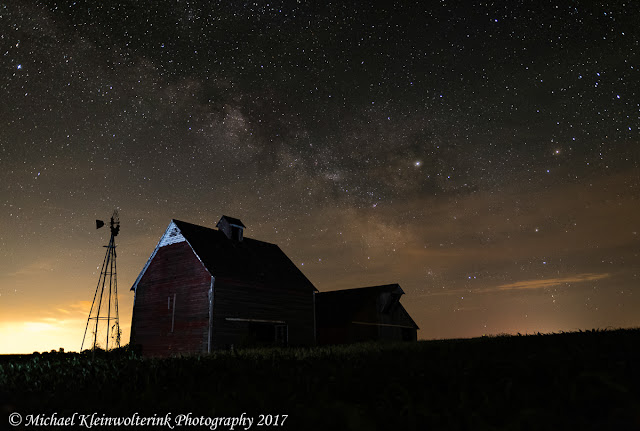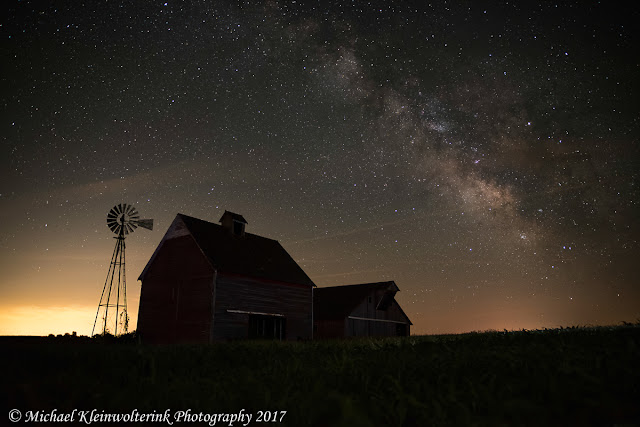Equipment Used: Nikon D750, Tokina 24-70mm f2.8 AT-X lense,
VanGuard Abel Plus 363CT tripod, Nikon SB-700 Speedlights, Vello FreeWave LR
Flash Triggers, PhotoPills, Lightroom & Photoshop CC
After having success of capturing the Milky Way last summer,
my goal for this summer was to capture it more often and to learn from the
mistakes that I made last year. One of those mistakes, was not knowing where
and when the milky way would be at a shooting location and the best time to
capture it. I solved that problem by
getting the PhotoPills app on my cell phone which allowed me to better plan my
photo shoots. If the weather cooperated with clear skies, I was out shooting
and the dates of June 19, 25 and 26th worked well.
I also tried out the Tokina 24-70mm f2.8 AT-X lense on my
D750 and was very pleased with the results over the previous lense I used last
summer. I placed my camera on the 363CT Tripod and shot in manual mode. Settings
were aperture of f2.8 and ranged the shutter speed from 5 to 13 seconds. ISO ranged
from 400 to capture the foreground to 6400 to capture the Milky Way but the
majority of the time it was at 3200. On the camera body, I set the self timer
to 3 seconds so I could get my finger off the shutter to reduce camera
movement. To expose the foreground, I used twin SB-700’s placed on homemade poles
and used the Vello FreeWave flash trigger to set them off.
The RAW files from the Nikon D750 were processed using
Capture NX-D, Adobe Lightroom CC and finished with PhotoShop CC. These images
were the first batch I’ve processed with Lightroom and PhotoShop so I watched
some youtube tutorials to learn the new programs. In Lightroom, under the basic
editing tab I used contrast, highlights, shadows, whites, blacks, clarity and
vibrance sliders. I changed the tone curve to a basic S curve and adjusted the luminance
color sliders. Under effects, I used the dehaze slider. To further tweak the
core of the milky way, I used the adjustment brush and it’s sliders. The barns
and corn cribs were edited in Capture NX-D with adjustments to the white
balance, picture control, saturation, contrast and shadow/lightlight slider.
Using PhotoShop CC I used the clone and patch tool to get
rid of unwanted objects in the images and developed a liking to the content
aware feature of the patch tool. Because I had sometimes different images for
the sky than for the barns and cribs, I used layer masks to combine them into
one. The windmill at the old farm location didn’t have a top to it so I went to
another location and took a picture of the windmill head. Using PS, I was able
to take that windmill head and make a brush out of it so I could add it into
these images to complete the look.
Star trail images were created using between 50 to 100
different images taken a few seconds apart during a thirty to an hour time
frame and combined in StarStaX.
The first new moon dates of the summer was a great success I
believe with what I was able to capture and I gave the Tokina 24-70mm a great
test at night. It has been shipped back to the company has new releases from
Sigma and Tamron have me interested in those lenses as well. One of the three
will find a permanent spot in my camera bag.
#1.
#2.
#3.
#4.
#5.
#6.
#7.
#8.
#9.
#10.
#11.
#12.
#13.
#14.
#15.
#16.
#17.
#18.
#19.
#20.
#21.
#22.
#23.
#24.
#25.
#26.
#27.
#28.
#29.
#30.
#31.
#32.
#33.
#34.
.
#35


































